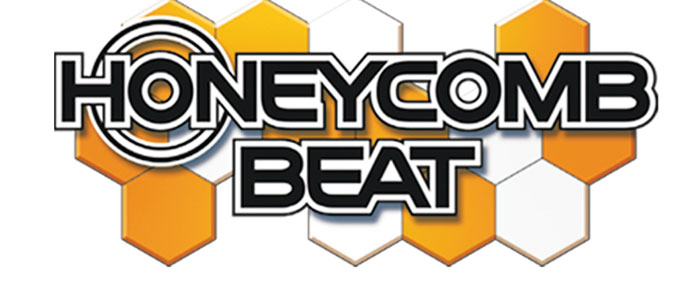Puzzle games on the DS are becoming a dime a dozen. This can be viewed as either a blessing with so much to play or a plague because the truly great ones get lost in the fray. Honeycomb Beat is the latest in this trend and it really tries to differentiate itself from the norm. The premise is simple; you have a set number of hexagon-shaped pieces that when tapped with the stylus flip over and change color. It’s easier to refer to this method as turning on and off each piece; the catch is that when you turn these pieces on or off all connecting pieces also switch to create a unique but effective game mechanic.
There are two separate modes to choose from with the first being the basic puzzle mode. Here you are presented with a specifically shaped grid and your goal is turn the entire board on. There is no set time limit; however you are only given a certain number of taps to solve the puzzle. Ironically you can still solve the puzzle if you go over your set number of beats with little penalty which takes away the fear of failing, but for those high-score junkies it drives you to go back and figure out better ways to solve each grid.
There are over 200 different puzzles to solve with the first quarter being relatively simple. After that though the game’s difficulty is erratic at best and the level designs become more complicated requiring more and more beats to solve. There are also a number of variables to consider the further you progress into the game in the form of different icons. These can alter the way your hexagons are flipped and some even require the block to be turned off by flipping a linking one. Even with these obstacles in front of you it’s still likely you will tear through this mode in a day or two.
The second mode is extremely different and even presents a sense of urgency like other titles in the genre. This mode is called evolution and it spans ten different difficulties of play. Unlike puzzle mode where time is not a factor, evolution mode requires the player to work fast by eliminating sets of blocks before they reach the top of the screen. This creates a faster-paced experience and for the most part tends to be more fun than the corresponding puzzle mode. There is also a ranking system that judges your level based on how quickly you complete each level, which is entertaining, yet still simple in execution.
Visually the game offers a nice palette of backdrops courtesy of the DS’ top screen. These are very reminiscent of certain screen savers one might find a computer chock full of dazzling kaleidoscope effects and trippy visuals. The background on the main screen is also random hosting a plethora of different images as you progress. From the outset both of these are limited but with a short stint in either of the game modes you will unlock plenty to keep the game looking fresh.
The music is also varied offering a mix of trance and techno beats that fit the atmosphere nicely. Once again the initial selection is a bit limited, but you will unlock them pretty quickly by playing through the single-player. Sadly once you finish the two main modes there is little to keep you coming back. Lack of any type of multi-player mode really hurts and would extend the life of the title.
Even with these minor shortcomings Honeycomb Beat is still a unique and fun game. The problem lies in the fact that outside of the disappointingly short single-player there isn’t any incentive to keep playing. Perhaps with a sequel we will see a form of multi-player or even a reward system to unlock different options for the game to spruce up the core experience. As it stands Honeycomb Beat will likely slip under most gamers’ radar and into the budget bin, which is sad considering the potential and originality of this title. Fans of puzzle games should definitely check it out, but be prepared for a short-lived good time.
